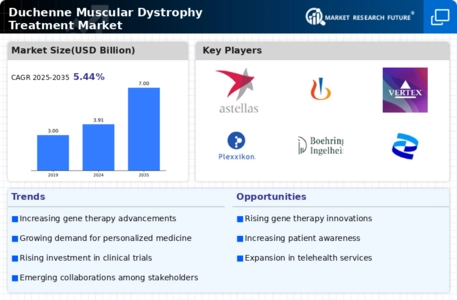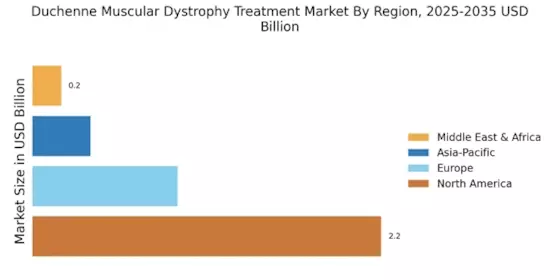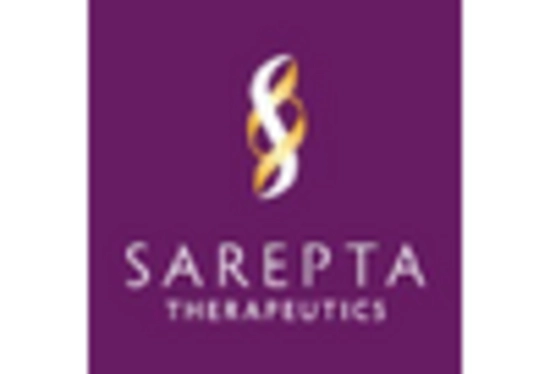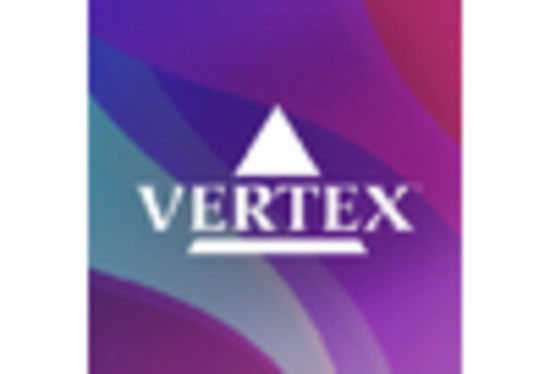The Duchenne Muscular Dystrophy (DMD) Treatment Market is characterized by a dynamic competitive landscape, driven by a confluence of innovation, strategic partnerships, and a growing emphasis on patient-centric therapies. Key players such as Sarepta Therapeutics (US), Pfizer (US), and Novartis (CH) are at the forefront, each adopting distinct strategies to enhance their market positioning. Sarepta Therapeutics (US) focuses on gene therapy and has made significant strides in developing innovative treatments that target the underlying genetic causes of DMD. Meanwhile, Pfizer (US) is leveraging its extensive research capabilities to explore new therapeutic avenues, particularly in the realm of RNA-targeted therapies. Novartis (CH), on the other hand, is concentrating on expanding its portfolio through strategic acquisitions and collaborations, thereby enhancing its therapeutic offerings in the DMD space. Collectively, these strategies contribute to a competitive environment that is increasingly characterized by rapid innovation and a focus on specialized treatment modalities.
In terms of business tactics, companies are increasingly localizing manufacturing and optimizing supply chains to enhance efficiency and responsiveness to market demands. The DMD Treatment Market appears moderately fragmented, with several players vying for market share. However, the influence of major companies is substantial, as they drive advancements in research and development, thereby shaping the overall market structure. The collective efforts of these key players not only foster competition but also stimulate growth within the sector, as they push the boundaries of what is possible in DMD treatment.
In August 2025, Sarepta Therapeutics (US) announced the initiation of a pivotal Phase 3 clinical trial for its gene therapy candidate, which aims to provide a one-time treatment for DMD. This strategic move underscores the company's commitment to advancing innovative therapies that address the root causes of the disease. The trial's success could potentially revolutionize treatment paradigms and solidify Sarepta's position as a leader in the DMD market.
In September 2025, Pfizer (US) revealed a partnership with a leading biotechnology firm to co-develop a novel RNA-targeted therapy for DMD. This collaboration is indicative of Pfizer's strategy to harness external expertise and accelerate the development of cutting-edge treatments. By pooling resources and knowledge, Pfizer aims to expedite the delivery of new therapies to patients, thereby enhancing its competitive edge in the market.
In July 2025, Novartis (CH) completed the acquisition of a biotech company specializing in gene editing technologies. This acquisition is a strategic maneuver to bolster Novartis's capabilities in developing next-generation therapies for DMD. By integrating advanced gene editing techniques into its research framework, Novartis is positioning itself to lead in the innovation of transformative treatments for DMD, which could significantly alter the treatment landscape.
As of October 2025, the competitive trends in the DMD Treatment Market are increasingly defined by digitalization, sustainability, and the integration of artificial intelligence in drug development processes. Strategic alliances are becoming more prevalent, as companies recognize the value of collaboration in navigating the complexities of the healthcare landscape. Looking ahead, competitive differentiation is likely to evolve from traditional price-based competition to a focus on innovation, technological advancements, and the reliability of supply chains. This shift suggests that companies that prioritize research and development, alongside strategic partnerships, will be better positioned to thrive in the evolving DMD treatment market.


















Leave a Comment